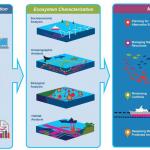Spatial planning in practice
Course Contents
In this course that follows a mixed problem & research-based approach the students will apply the knowledge learnt in the other courses to real case studies. In the region of Asturias there is a diversity of coastal and marine spaces with different protection figures and management, amongst them the first Marine Protected Area of Spain (El Cachucho, 2011), together with disturbed areas such as two international ports (Gijón, Avilés) and heavily polluted estuaries. Students will work individually or in two-person teams and analyse species and space case studies in two separate modules. Common theory: Key environmental disturbances in coastal and marine ecosystems and their indicators. Statistical tools to identify spatial patterns – an overview. Integrating management units, environmental features, landscape ecology and genetics in marine ecosystems. Module 1. Species with spatial structuring (3 ECTS). The spatial structuring of a species will be discovered using state of the art methodology, and a management plan will be designed accordingly. Module 2. Planning the use of marine spaces (3 ECTS). A zone of the coast will be GIS-mapped and its environmental and biodiversity status evaluated. A plan of uses and management will be designed accordingly.
Final Competences
Students should be able to integrate and apply their knowledge about marine spaces and analytical tools for planning the use and management of a particular area.
Further course information can be found here: https://studiekiezer.ugent.be/2026/studiefiche/en/C004241






